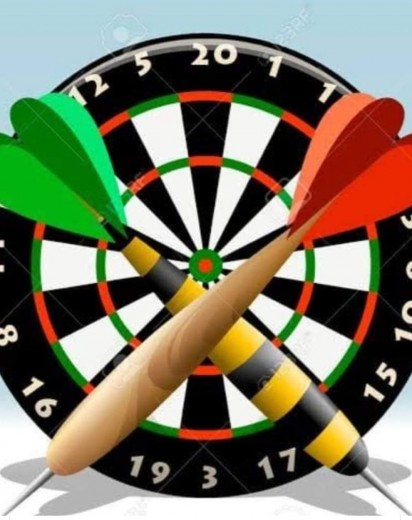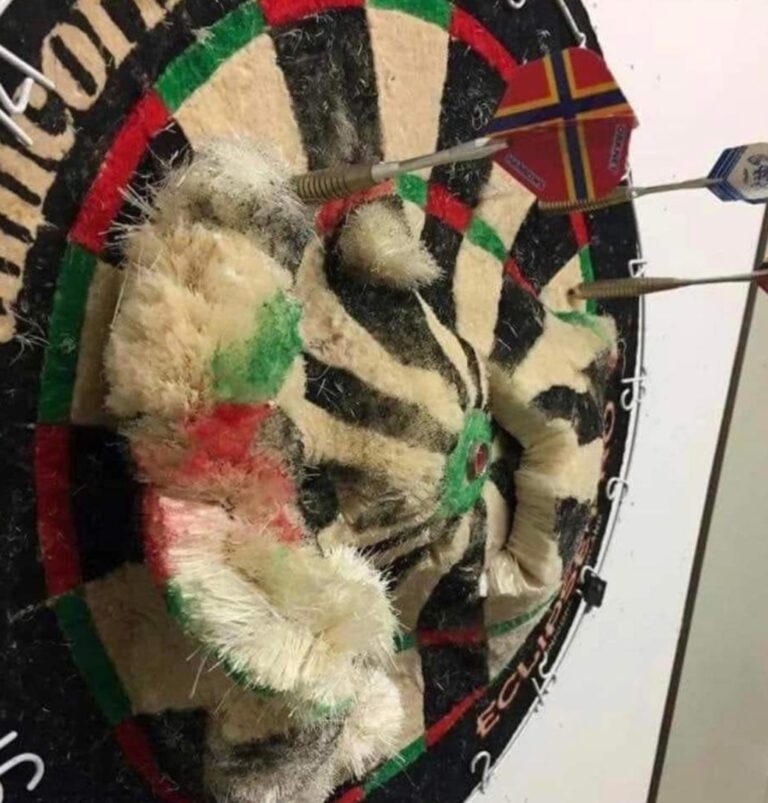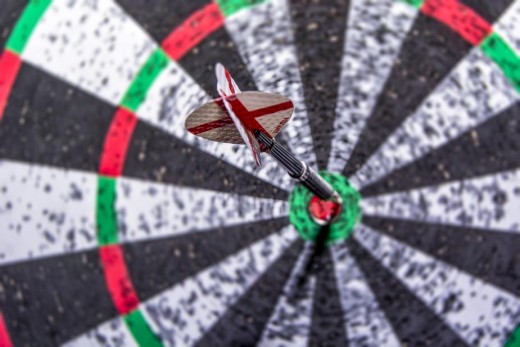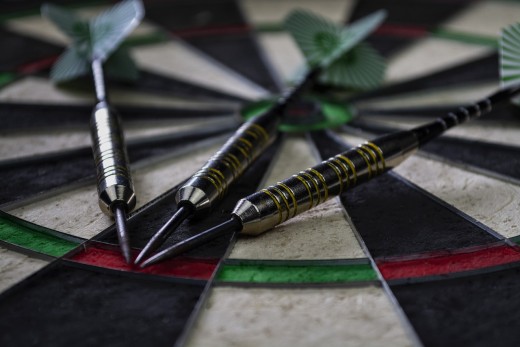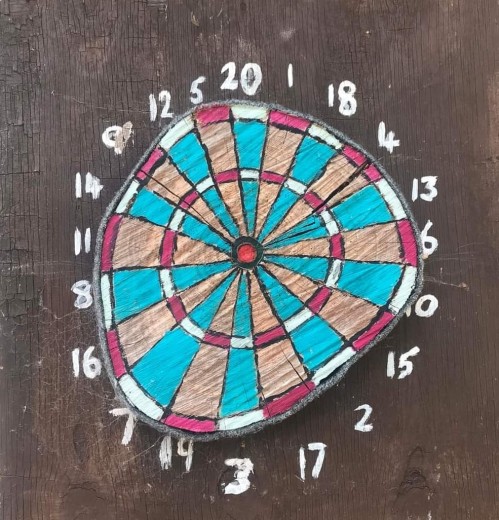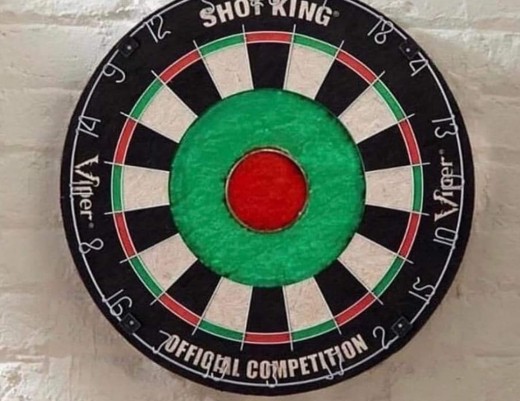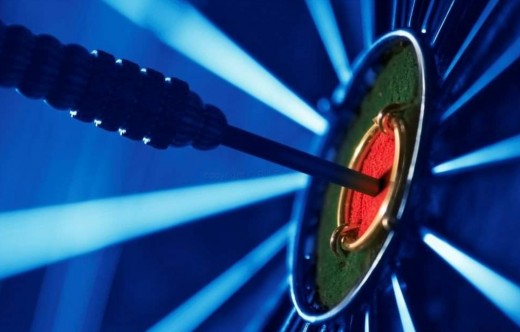Tuesday, May 1, 2018
Column 557
Just the MAPP facts, Jack! And more.
About a month ago I pulled a column. It was titled “Darts Retail in the US: Savvy Business Model or American Greed?” Although I didn’t author the piece I endorsed it as “thought provoking and well researched.”
I learned very quickly that while it may have been thought provoking it was most certainly not well researched. Either that or for some purpose it was intentionally meant to be deceptive.
I was wrong to have carried the article. I owe, and offer, a tremendous apology to darts shop owners all across America.
It turns out the article contained numerous errors, incorrect examples of pricing (wholesale prices being quoted far too low and retail too high) and, frankly was full of low blows and bullshit.
Ostensibly written as a “service” to inform American players that they are being ripped off and to educate them on how they can purchase darts products from the UK far less expensively than at home, the writer relied on incorrect (perhaps even fake) numbers to make his case and encourage outrage among players in this country.
In reality the piece was little more than an advertisement for British discount darts vendors.
For the record, no British darts vendors of which I am aware have ever spent a dime to promote darts leagues in the USA. Local shops across this country are the backbone of support for local leagues and tournaments. This should count for something. This is value. The article was a disservice to every American shop owner who has spent hard-earned time and money to support the sport we love.
Along with the pricing inaccuracies, the article stated that all darts are the same, just bits of tungsten thrown on a lathe. That is incredibly naive and simply wrong. The assertion that most tournament darters throw Bottelsen HammerHead darts is equally absurd.
Compare a cheap basic grooved dart (turned on a lathe) to a Phil Taylor Gen 2 (milled on a 5-axis machining center and vapor-deposit coated multiple times). Plus, of course, the difference in cheap 70% or 80% tungsten darts and 95% tungsten darts.
At one point in the article, it was argued that US darts shops “prey” upon customers. Really?
The writer followed this with a statement to the effect that he didn’t understand the discrepancy in pricing. If he didn’t understand it, he should have just stopped right there!
Based only on (incorrect) factory wholesale pricing quotes, the author built a case alleging that “greedy” US darts shop owners are “preying” on ignorant customers.
Yes, British discounters do currently offer some darts styles to Americans at cheaper Internet prices. American retailers have additional expenses that cause such imported items to cost more here. The same is true of nearly all imported merchandise, whether imported cameras or bicycles.
Unfortunately, the author went on to attribute such price differences to “greedy” shop owners and a common manufacturer policy called MAPP.
There are a number of structural reasons why many British darts styles are cheaper right now. None have anything to do with greed on the part of American shop owners. And none have squat to do with MAPP (Minimum Advertised Pricing Policy). More on MAPP in a moment but suffice it to say the entire premise of the article was technically false.
The article’s primary fallacy lies in considering only factory wholesale price as the real cost of goods used to determine retail pricing. Retail pricing and profit margins are based on the actual cost of the merchandise, which includes freight, financing and wire transfer fees, customs and import fees, wastage, and a bunch of other expenses.
Figuring pricing based on only factory price list is akin to pricing a new car based on cost while sitting on an assembly line in Detroit (or Korea). Consumer options, delivery, preparation, etc. all add to cost.
Some cost differences between UK & US, which apply to most imported merchandise…
The UK Pound is currently at a 30-year low in relation to the US Dollar. That gives UK exporters a great financial advantage. Darts exported to the US appear about 20% cheaper than a few years ago (certainly before Brexit).
UK darts shops have minimal freight costs. With their suppliers nearby, merchandise is quickly available via cheap local delivery or pickup. Unicorn, Target, Harrows, Retriever and so on are all within a short distance of each other.
US shops have to pay considerable air freight and associated fees to get merchandise from those same manufacturers.
UK discounters have low fixed inventory costs. For many items, only a day or two supply of inventory is needed, again because their suppliers are relatively close. In order to serve customers promptly while allowing for shipping time, US distributors must stock considerable quantities of inventory. Inventory sitting in warehouses only takes up expensive space and doesn’t earn any profit.
To get better shipping rates, most US distributors must buy several thousand dollars worth of merchandise per order. Manufacturers often impose minimum quantity purchase requirements. That all affects cash flow, increasing expenses.
Part of the price difference seen by US consumers in advertising is illusionary, as UK customers pay VAT (Value Added Tax) in addition to the price listed online. US customers don’t pay such a tax, and don’t generally consider that cost when comparing prices.
UK corporate income tax rates are currently 19%, dropping soon to 17%. That is a considerable advantage over US income tax rates, which have only recently dropped to 21%. Various export tax incentives may also be available to many UK companies.
US Customs duties are not generally charged on imported darts merchandise, but US Customs inspection and paperwork processing fees are charged for commercial-size orders. Shipping companies can also charge fees for handling US Customs paperwork.
Purchasing sometimes literally at the factory door means no Customs or freight processing fees for UK companies. Such fees can cost US shops from $35 to $100+ per shipment.
Most large UK discount darts exporters get favorable payment terms their suppliers, usually Net 30 or Net 60 invoice terms. Only the largest US importers get such terms, so small American darts shops often pay in-advance, plus $35 to $60 bank wire transfer fees or international credit card fees. If paying by credit card, some darts manufacturers charge US distributors fees ranging from 3.5% to 5%.
Those fees add up, adding to the actual cost of goods and eating away profit margin. After paying freight, US Customs processing and financial fees, a darts shop might need all of the profit from selling sets of darts just to cover the freight and fees in one shipment.
So, back to the foundation of the author’s article: MAPP…
MAPP (Minimum Advertised Pricing Policy) is a contractual policy common to nearly all retail industries. Primarily applied to high-end merchandise, it simply allows brands to monitor what is said about their products in advertising. Retailers are generally required to avoid advertising prices below a certain discount level. This is mostly applicable to premium items, and less than 20% of darts merchandise is estimated to be covered by MAPP policies. A brief Internet search reveals that many of those policies are not enforced consistently or regularly.
MAPP pricing guidelines are generally set to allow a slight retail profit margin, especially when running sales or operating in a low-cost environment such as the Internet. MSRP (Manufacturer’s Suggested Retail Price) is a price level designed for everyday sales, particularly in brick and mortar stores that have higher operating expenses and provide personal customer service.
Manufacturers’ pricing guidelines are supposed to allow a little bit of financial room for retailers to advertise the company’s products, promote darts, carry sufficient inventory and basically just stay in business long enough to be a repeat customer.
If profit margins are too low, retailers will not earn enough to restock inventory, and will likely go out-of-business. If products are being widely sold at unprofitably low prices, retailers will just choose not to carry that brand. That further reduces customer choice and availability.
Since the vast majority of American darts shops have gone out-of-business in the last 20 years, it is pretty clear that darts shop profit margins are not especially high.
The author clearly did not understand the relationship of profit margin and total cost of goods. The article reflected only cursory research about the complexities of MAPP and its application to US retailing in general. The author apparently read a supplier’s contract posted online and had a fit of righteous outrage over perceived “greed.”
However, retail pricing is a whole lot more complex than that, and he failed to understand both the real cost of goods or the real-world application of factory recommended pricing in operating businesses. (The author later stated that most of his data came from a single retailer’s web site, which may or may not have been up-to-date. Most of the numbers did not match a check against several recently-dated manufacturer price lists.)
The article also implied that darts shops use Price Fixing tactics to cheat customers. Price Fixing is defined as sellers consulting with other sellers to fix prices. That is a felony under federal law and certainly not any kind of normal practice in the darts industry.
Premium brand manufacturers may contractually require a retailer to show at least their minimum price in advertising, but a manufacturer does not control actual sales prices in a store. The key word is “advertised” price.
Face-to-face with a customer, stores can legally sell merchandise at any price they choose. Shops simply may not be able to advertise some discount prices under terms of their distribution contract. As a practical matter, most stores do sell premium items at or near MSRP or MAPP, but also sometimes use other methods to offset the price. Of course, if they sell at too cheap a price, they go out of business.
Many (brick and mortar retail) stores have un-advertised sales, local darts league discounts, offsetting deals, etc., that make branded items more affordable. Some stores might charge a MAPP price for some premium items but offset much of the cost to give the customer a substantial amount of free flights, shafts, accessories, plus large discounts on cases, dartboards, etc.
For example: Go into a running store to buy high-end Adidas shoes and very likely the salesmen will offer a discounted package deal, quite possibly throw in some high end running socks and perhaps also heavily discount some shorts, wristbands, etc. Or, buy an Apple computer at full retail then get a free keyboard, printer, etc. to help offset the price. Visit a specialty store in person, and you will often find actual selling prices or package prices that may not be shown in online advertising. Another good reason to visit brick and mortar stores, by the way.
In many darts shops customers typically spend an hour or two test-throwing darts before purchasing a set. Lessons are generally free and shop owners and staff can usually offer suggestions to improve one’s throw. This is certainly a worthwhile way for a beginner to learn the basics. That time, space and service costs money.
And that kind of service is not something one can get online from a British discount vendor.
British discounters do not contribute to local American darts leagues, local charities, local sales taxes, property taxes, hire local employees, support local bars, sponsor local tournaments, give personal instruction, let customers test-throw darts, or promote darts to amateur level players.
Value. Value. Cost. Cost.
THIS is where a lot of the money from US darts shops goes. After considerable expenses, most remaining profits are invested back into the sport and community, especially at the local and beginner level that is the foundation of our sport. Without ongoing local promotion, darts activity drops off quickly. Where exactly is the “greed” in this?
The article ignored the fact that only a few premium brands are affected by MAPP pricing. The vast majority of darts are not affected by MAPP, and many good basic tungsten darts are available at prices down to the $45 range. High-end 95% tungsten darts are more, of course, just like high-end merchandise in any sport. And there certainly IS a major difference in tungsten materials and darts quality, regardless of the author’s uninformed opinion.
None of those British discounters have ever done squat to promote darts at a basic level here in the USA. They operate with little overhead because they have fewer expenses and they don’t spend any time or money to help local players or beginning level darters.
The article and headline implied (stated) that US darts shops are greedily feasting on ignorant customers. In reality and as already stated, most US darts shops have already gone out of business and many remaining shops barely keep their doors open. Most certainly, there is not much of a profit margin left after paying expenses.
The article could have made well-researched and honest points without trashing American dart shop owners who work hard to promote darts for very little return.
I ask anyone who has read this far: do you know any extremely wealthy darts shop owners? I don’t. If there are “greedy” retail darts shop owners out there angling to live the highlife by screwing the player-buyers it would seem they are doing a damn ineffective job.
International discounters are basically parasites feeding off of the hard work of American darts promoters. The published opinion piece reads like a paid advertisement for those discounters, certainly not as any sort of unbiased analysis.
So there you have it – the reasons why the article was pulled.
Intentionally or not, it was ill-informed.
It was flat-out wrong about the impact of MAPP and other “facts” relating to American darts shops.
It was a blatant promotion for online British discounters. To imply and state that American darts retailers “prey” on the faithful and are “greedy” was outrageously unfair.
I was dead wrong to have printed the story and take full responsibility.
From the Field,
Dartoid

